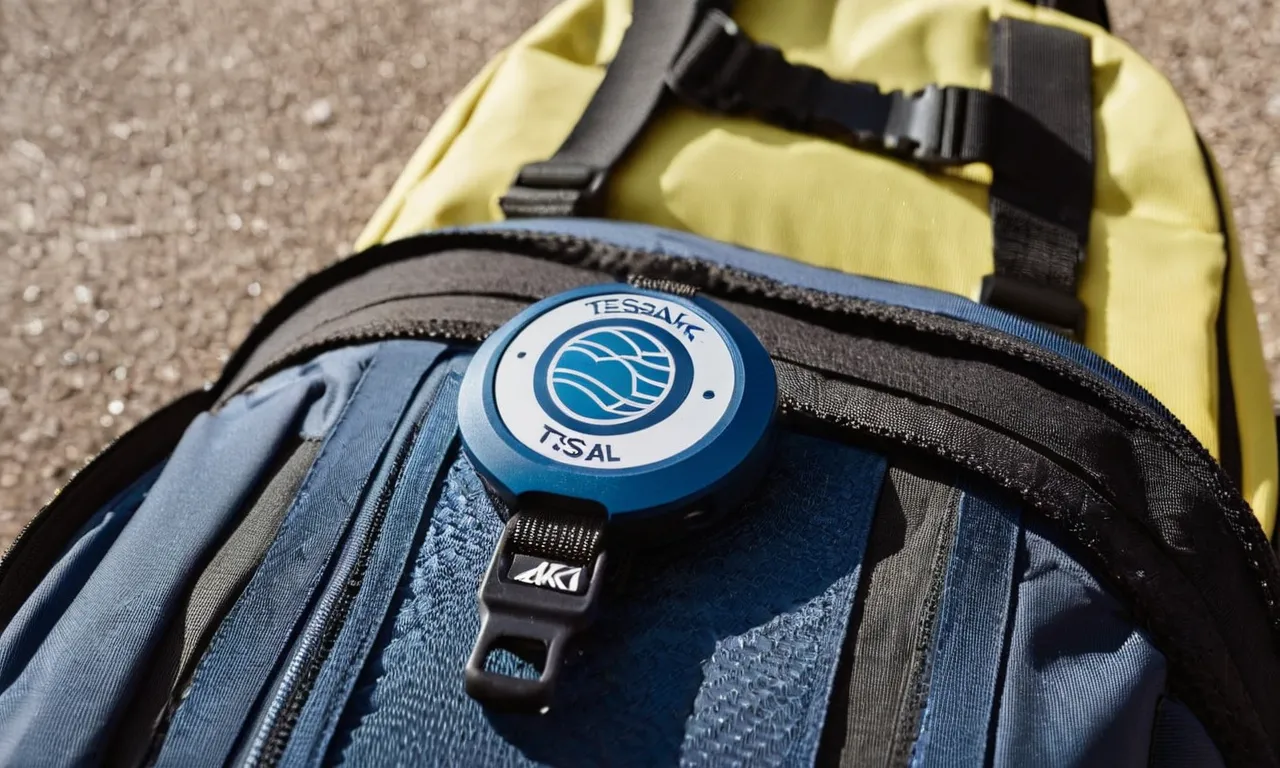Are AirTags TSA-approved? Everything You Need To Know
Are AirTags TSA-approved? With AirTags becoming increasingly popular for tracking luggage and other belongings, many travelers want to know – can you bring an AirTag on a plane? If you’re in a rush, the short answer is yes, AirTags are generally allowed in both carry-on and checked baggage by the TSA.
However, there are some important rules and restrictions to be aware of. In this comprehensive guide, we’ll cover everything you need to know about flying with AirTags so you can travel at ease.
We’ll provide a detailed overview of TSA regulations regarding AirTags, best practices for using them to track luggage, privacy considerations, rules around lithium batteries, and advice for international travel.
We’ll also answer common questions about AirTags being flagged at airport security and what to do if your bag with an AirTag gets lost. By the end, you’ll understand exactly if and how AirTags are TSA-approved.
Are AirTags Allowed on Planes by the TSA?
If you’re planning to travel with AirTags, you may be wondering whether these tracking devices are allowed on planes by the Transportation Security Administration (TSA). The good news is that AirTags are indeed permitted by the TSA, both in carry-on bags and checked luggage.
This means you can bring your AirTags along with you on your next flight without any issues.
Yes, the TSA Allows AirTags in Both Carry-On and Checked Bags
Whether you prefer to keep your AirTags in your carry-on bag or want to place them in your checked luggage, the TSA allows you to do both. This gives you the flexibility to choose the most convenient option for you.
If you decide to keep them in your carry-on, you can easily keep an eye on your belongings and ensure they are secure. On the other hand, if you prefer to place them in your checked bag, you can have peace of mind knowing that your AirTags will still be able to track your luggage throughout your journey.
Rules and Regulations Regarding AirTags at TSA Checkpoints
When going through TSA checkpoints, it’s important to follow the rules and regulations to ensure a smooth and hassle-free experience. Here are a few things to keep in mind when traveling with AirTags:
- Make sure your AirTags are securely attached to your belongings and are not loose in your bag.
- Ensure that your AirTags do not interfere with any electronic devices or equipment during the screening process.
- Be prepared to remove your AirTags from your belongings if requested by the TSA officer for further inspection.
- Remember to comply with any additional instructions provided by the TSA officers regarding your AirTags.
By following these guidelines, you can ensure a smooth and hassle-free experience when traveling with AirTags. For more detailed information on TSA regulations, you can visit the official TSA website here.
Best Practices for Using AirTags to Track Luggage
Traveling can be a stressful experience, and one of the biggest worries for many travelers is the possibility of losing their luggage. Thankfully, with the introduction of AirTags, you can now track your bags with ease.
However, it’s important to follow some best practices to ensure that your AirTags are used effectively and comply with TSA regulations.
Choosing Where to Place Your AirTag
When it comes to placing your AirTag on your luggage, it’s important to choose a location that is secure and won’t easily detach during transit. The best option is to place the AirTag inside a pocket or a compartment of your suitcase, rather than attaching it to the outside.
This will not only keep it safe from potential tampering but also prevent it from falling off or getting damaged.
Setting Up and Testing Your AirTag Ahead of Time
Prior to your trip, make sure to set up and test your AirTag to ensure that it is functioning properly. This includes pairing it with your iPhone or iPad, naming your AirTag, and setting up any necessary alerts or notifications.
Additionally, it’s a good idea to test the tracking feature to confirm that it accurately locates your luggage.
It’s also worth noting that AirTags have a range limitation, so it’s important to keep your device within proximity of your luggage for optimal tracking. If your luggage is out of range, the AirTag may not be able to provide real-time updates on its location.
What To Do If Your Checked Bag with AirTag Gets Lost
Despite taking all necessary precautions, there is still a chance that your checked bag with an AirTag may go missing. In such a situation, it’s important to remain calm and follow the proper steps to recover your luggage.
If you notice that your bag is missing, immediately inform the airline or relevant authorities at the airport. Provide them with a detailed description of your bag, including any unique identifiers such as stickers or tags.
It’s also essential to provide them with the serial number or unique identifier of your AirTag, as this can assist in locating your bag more effectively.
In addition to reporting the loss, it’s advisable to track your bag using the Find My app on your iPhone or iCloud website. This can help you pinpoint the last known location of your bag and provide valuable information to the authorities.
Remember, while AirTags can greatly enhance your ability to track your luggage, they are not foolproof. It’s always a good idea to have other identification tags on your bags, such as luggage tags with your contact information.
This ensures that even if your AirTag becomes detached or malfunctions, there is still a way for someone to contact you if your bag is found.
By following these best practices, you can maximize the effectiveness of your AirTags and increase the chances of recovering your lost luggage. Safe travels!
Privacy Considerations and Rules with AirTags
AirTag Privacy Features and How They Work
AirTags, the small and handy tracking devices introduced by Apple, have gained popularity for their ability to help locate lost items. However, privacy concerns have also been raised regarding their usage. To address these concerns, Apple has incorporated several privacy features in AirTags.
One of the key privacy features of AirTags is the ability to provide notifications to iPhone users if an unknown AirTag is found moving with them. This ensures that individuals can be alerted if someone tries to track their location without their knowledge or consent.
This feature helps in maintaining user privacy and preventing unauthorized tracking.
Additionally, AirTags have a unique privacy feature called “Find My Network” that leverages the vast network of Apple devices to detect and locate misplaced or lost AirTags. This network ensures that only the owner of the AirTag can access its location and prevents any unauthorized access to personal information.
Moreover, AirTags have been designed with privacy in mind. They do not use any personally identifiable information on the device itself, and the location data transmitted by the AirTag is encrypted, ensuring that it cannot be intercepted or accessed by unauthorized parties.
It is important to note that while AirTags provide privacy features, it is still crucial to use them responsibly and follow the rules and guidelines set by regulatory authorities.
Rules Against Using AirTags for Tracking People or Items Without Consent
When it comes to using AirTags, it is essential to respect privacy and adhere to the rules and regulations set by authorities. Tracking people or items without their consent is strictly prohibited and can have legal consequences.
The Transportation Security Administration (TSA) and other regulatory authorities have established guidelines that prohibit the use of tracking devices, including AirTags, for unauthorized tracking purposes.
This means that using AirTags to track someone without their consent is not only a violation of privacy but also against the rules set by these authorities.
It is important to understand that privacy is a fundamental right, and individuals have the right to consent to being tracked. Therefore, it is crucial to obtain consent before using AirTags to track someone or their belongings.
By following these rules and respecting privacy, individuals can make the most of the convenience provided by AirTags while ensuring that privacy remains intact.
AirTag Battery Regulations and Restrictions
TSA Rules on Lithium Batteries in Carry-On vs Checked Bags
When it comes to traveling with AirTags, it’s important to be aware of the TSA rules and regulations regarding lithium batteries. AirTags are equipped with a small CR2032 coin-cell battery, which falls under the category of lithium batteries.
These batteries are generally allowed in both carry-on and checked bags, as long as they are installed in electronic devices or securely packed to prevent short circuits.
According to the TSA, spare lithium batteries, including the ones used in AirTags, should ideally be carried in your carry-on bags. This is because if a lithium battery were to catch fire in the cargo hold of an aircraft, it would be more difficult to detect and extinguish.
However, if you need to pack your AirTag in your checked bag, make sure it is turned off to prevent accidental activation and potential battery drain.
It’s worth noting that the TSA reserves the right to inspect and remove any item from luggage if they believe it could pose a security risk. So, it’s always a good idea to familiarize yourself with the latest TSA guidelines before traveling with AirTags or any other electronic devices containing lithium batteries.
AirTag Battery Life Expectancy and Changing Tips
The battery life of an AirTag can vary depending on usage and settings. On average, the CR2032 coin-cell battery in an AirTag can last up to a year. However, this estimate may differ based on factors such as the frequency of use, proximity to the connected device, and the number of notifications received.
If you notice that your AirTag’s battery is running low, you can easily replace it with a new CR2032 coin-cell battery. Simply twist the back cover of the AirTag counterclockwise and remove the old battery.
Make sure to dispose of the old battery properly, following the guidelines for safe battery disposal.
When replacing the battery, it’s a good practice to clean the contacts inside the AirTag and on the battery to ensure a good connection. This can be done using a clean, dry cloth or a cotton swab. Once the new battery is inserted, twist the back cover clockwise until it is securely closed.
It’s important to note that AirTags are designed to notify you when the battery is running low through the Find My app on your iPhone or iPad. This way, you can proactively replace the battery before it completely drains and potentially lose track of your valuable items.
International Travel Regulations for AirTags
When it comes to international travel, it’s important to stay informed about the regulations surrounding AirTags. These small tracking devices have gained popularity for their ability to help locate lost items, but it’s crucial to understand how they are regulated in different countries.
AirTag Restrictions for Specific Countries
While AirTags are generally allowed in most countries, there are some specific regulations to be aware of. For example, in Australia, the Australian Communications and Media Authority (ACMA) requires AirTags to meet certain frequency and power limits.
Additionally, AirTags must be registered with the ACMA before they can be used in the country.
In Europe, the European Telecommunications Standards Institute (ETSI) has set standards for AirTags to ensure they do not interfere with other devices. These standards include limits on the frequency range and power output of AirTags.
It’s important to check the specific regulations of each country before traveling to ensure compliance.
When traveling to the United Kingdom, AirTags must comply with the UK’s regulations on radio frequency devices. The Office of Communications (Ofcom) sets the standards for these devices and ensures that they meet safety and interference requirements.
Using AirTags as a Foreign Traveler Visiting the US
If you are a foreign traveler visiting the United States, you can use AirTags during your trip. The Transportation Security Administration (TSA) has not imposed any specific restrictions on AirTags for travelers entering or leaving the US.
However, it’s important to keep in mind that AirTags are subject to the same restrictions as other electronic devices when going through airport security. Make sure to remove AirTags from your checked baggage and place them in your carry-on bag to comply with TSA regulations.
Additionally, it’s always a good idea to familiarize yourself with the rules and regulations of the airline you are flying with. Some airlines may have their own policies regarding the use of AirTags on their flights.
For more information about international travel regulations for AirTags, you can visit the official websites of the regulatory bodies mentioned above:
- Australian Communications and Media Authority (ACMA)
- European Telecommunications Standards Institute (ETSI)
- Office of Communications (Ofcom)
By staying informed and following the regulations in place, you can ensure a smooth and hassle-free travel experience with your AirTags.
Frequently Asked Questions About AirTags and TSA Rules
Can an AirTag Get Your Bag Searched or Flagged at Airport Security?
AirTags are small, coin-shaped devices that use Bluetooth technology to help you keep track of your belongings. They are not likely to get your bag searched or flagged at airport security. AirTags are designed to be safe and non-threatening, and they comply with TSA regulations.
However, it’s important to note that airport security procedures can vary depending on the country and airport you are traveling through. While AirTags are generally accepted by TSA, it’s always a good idea to check the specific rules and regulations of the airport you will be flying from and to.
What If My Checked Bag with AirTag Gets Lost?
If your checked bag with an AirTag gets lost, the AirTag can still be helpful in locating it. AirTags work by using the Find My app on your iPhone or iPad to track the location of your belongings. If your bag goes missing, you can use the app to see its last known location and get directions to find it.
Additionally, many airlines have their own baggage tracking systems in place. If your bag gets lost, you can contact the airline’s customer service and provide them with the AirTag’s serial number. This can help them locate your bag more efficiently.
It’s worth noting that AirTags have a limited range, so if your bag is far away or out of range, it may not be able to provide real-time location updates. However, the AirTag can still be a useful tool in assisting with the recovery of your lost luggage.
If you have any concerns or questions about using AirTags with checked bags, it’s always a good idea to reach out to your airline or refer to their official website for specific guidelines and recommendations.
Are AirTags TSA-approved – Conclusion
Hopefully, this guide has provided everything you need to know about whether AirTags are allowed on planes, as well as key factors to consider when using them to track luggage while traveling. The bottom line is that yes, TSA regulations do permit AirTags in both carry-on and checked baggage within lithium battery limits and privacy rules.
Taking some basic precautions with placement and setup can give you peace of mind about your bags’ whereabouts on your next trip.








